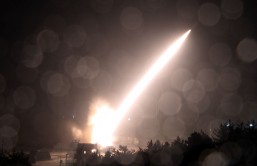Technology developed for solar energy has been adapted by researchers at the University of North Carolina at Chapel Hill for the purpose of removing some of the toughest elements found in nuclear waste. The invention will make the process of storing and transporting nuclear waste safer and non-toxic.
Storing toxic runoff from nuclear energy is a pressing, decades-old problem faced by the nuclear industry. The new technology, however, could provide a vital next step toward the completion of the nuclear fuel cycle.
A series of studies led by Tom Meyer, Arey Distinguished Professor of Chemistry at UNC's College of Arts and Sciences, could pave the way for the expansion of nuclear power generation, one of the most efficient sources of energy available on the planet.
"In order to solve the nuclear waste problem, you have to solve the americium problem," Meyer explained.
Although americium is not as easily recognizable as plutonium and uranium, scientists have working for decades to find a way to remove this element from nuclear waste pools and to manage toxic waste disposal. Some attempts appeared to be initially successful, but failed to become long-term solutions.
Now, Meyer and his team, including project lead Chris Dares, have established a method of removing this particular radioactive component — without confronting the same long-term issues that have hampered progress up to this point. They have adapted technology related to Meyer's work at the UNC Energy Frontier Research Center of Solar Fuels, which is capable of splitting electrons from water molecules.
In the case of americium, the researchers made modifications in order to split electrons from americium. This process requires twice as much energy input as splitting water. By extracting the three electrons, americium subsequently acts like plutonium and uranium, which can easily be removed via existing technologies.
The nuclear fuel is first used in the form of small capsules that are loaded into long, narrow rods. In order to reprocess them, the used fuel must be dissolved in acid so that the plutonium and uranium can be separated. Through this procedure, the americium can be separated with either plutonium and uranium, or removed in a second stage.
Meyer, Dares and the team worked jointly with Idaho National Laboratory (INL), which offered research provisions as well as technical assistance with handling the nuclear materials. Most of the experiments were conducted in the Idaho laboratories, a secure area for working with radioactive substances.
INL and UNC-Chapel Hill are aiming to expand the research and experimentation, and to further develop the process. "With INL working with us, we have a strong foundation for scaling up this technology," Dares said.
"With a scaled up solution, not only will we no longer have to think about the dangers of storing radioactive waste long-term, but we will have a viable solution to close the nuclear fuel cycle and contribute to solving the world's energy needs," he explained, adding, "That's exciting."
Along with wind and solar power, this process could in turn help to refine and clean the world's energy production into the future.
The study is published in the journal Science.








